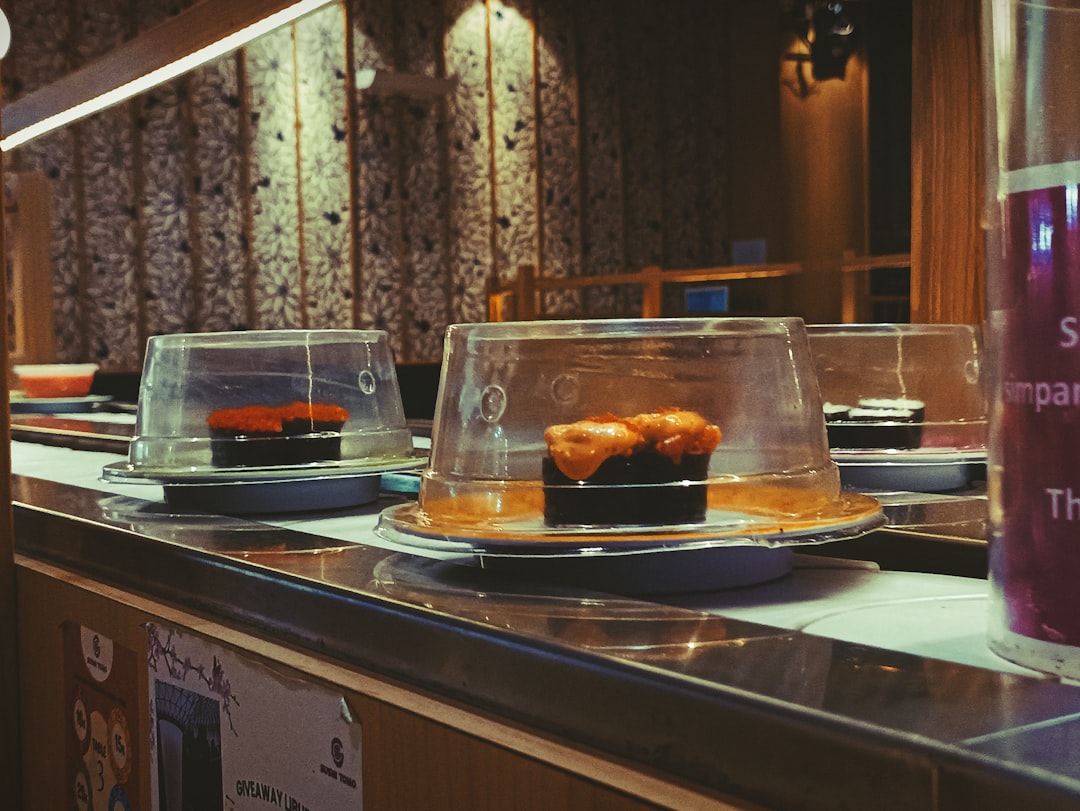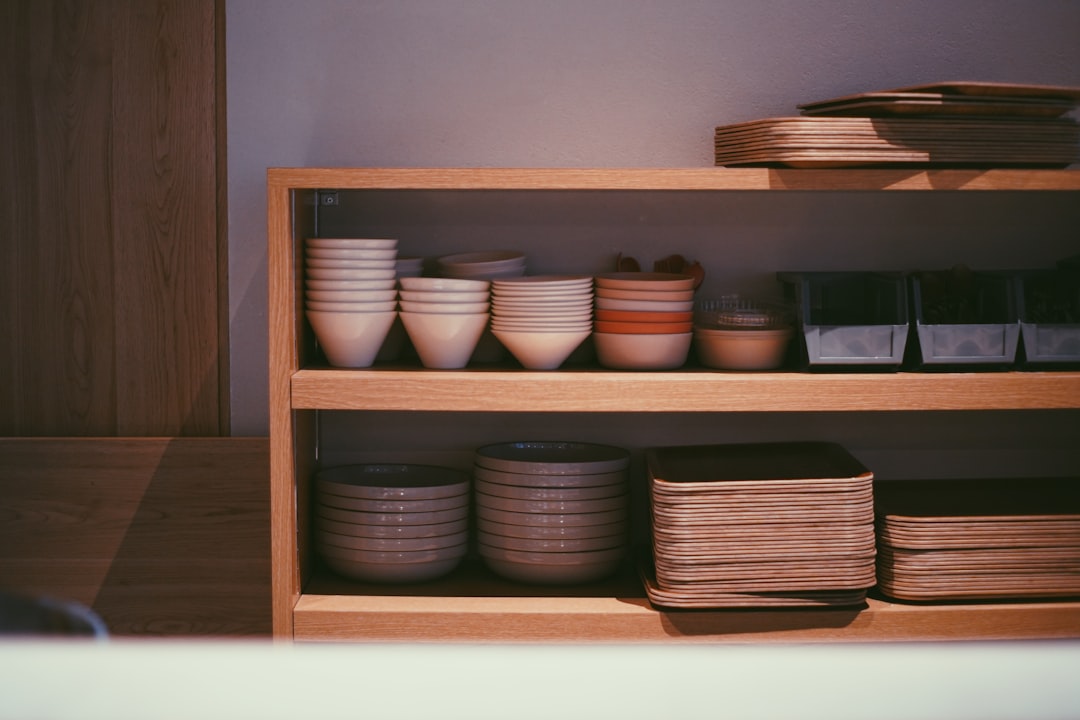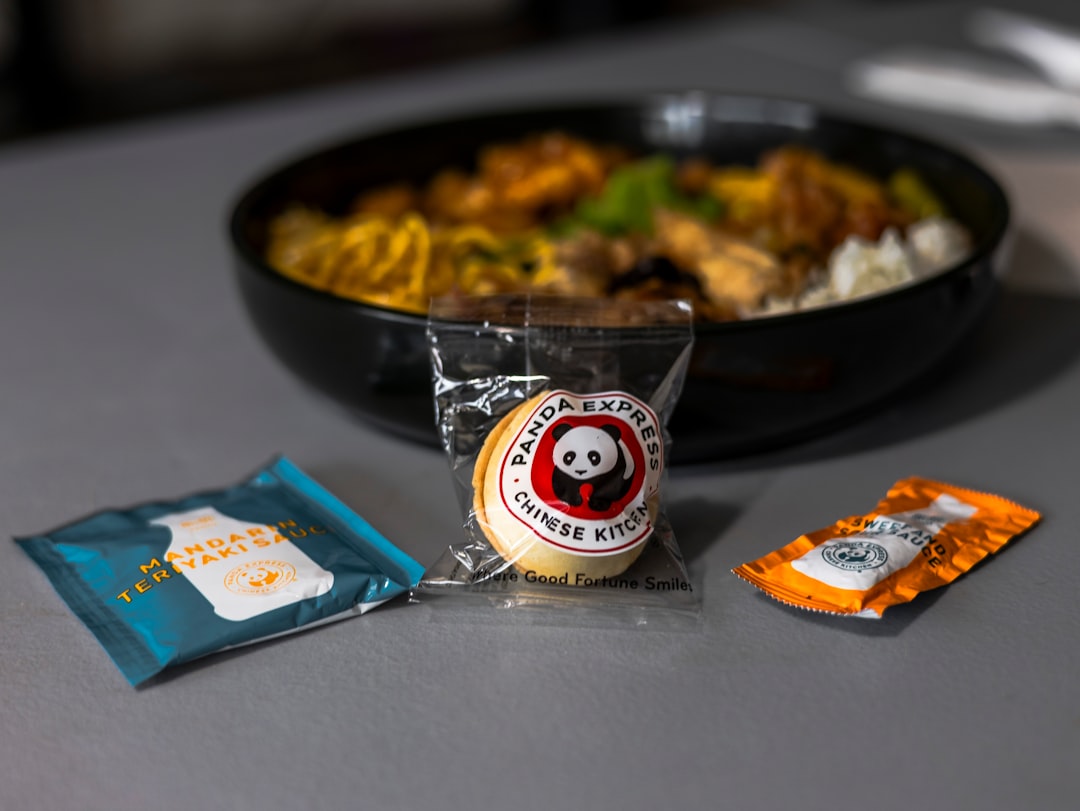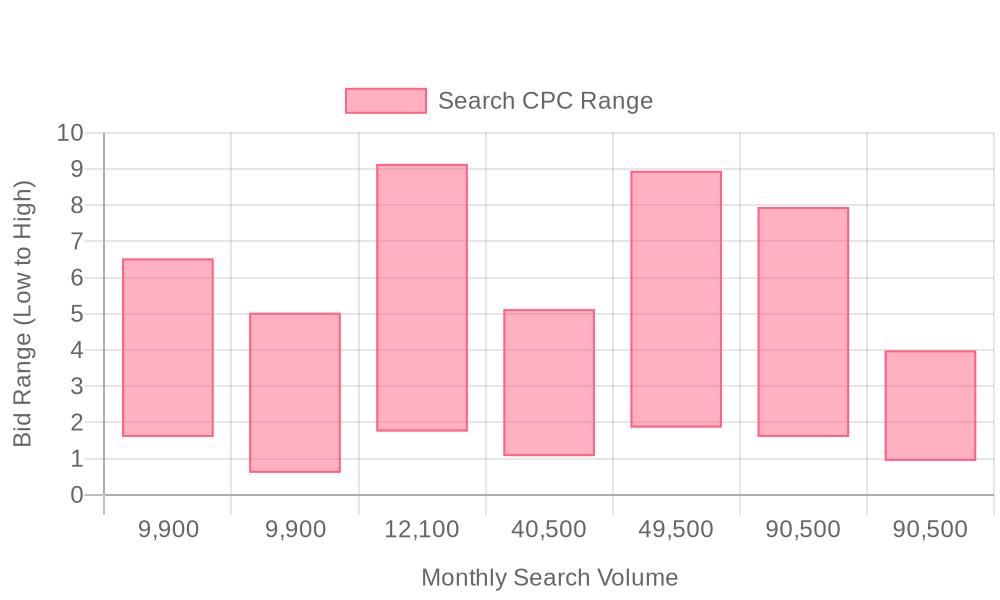
Supercharge your lead generation with a FREE Google Ads audit - no strings attached! See how you can generate more and higher quality leads
Get My Free Google Ads AuditFree consultation

No commitment
Supercharge your lead generation with a FREE Google Ads audit - no strings attached! See how you can generate more and higher quality leads
Get My Free Google Ads AuditFree consultation

No commitment
In today's complex marketing landscape, managing successful advertising campaigns for restaurant supplies requires a strategic approach that harnesses both digital and offline channels. Google Ads presents a crucial opportunity in this realm. It captures high-intent searchers actively looking for solutions, acting as a bridge between awareness and sales efforts. For restaurant supply businesses, leveraging Google Ads effectively can mean intercepting decision-makers precisely when they're in need, ensuring visibility in competitive markets, and achieving measurable ROI by linking clicks to sales conversions. Addressing challenges such as missing high-value prospects and ensuring timely follow-up are vital for success.

Restaurant supply businesses operate in a results-driven B2B environment where digital visibility translates directly to new customer acquisition and revenue growth. With Google Ads, these suppliers can position their offerings in front of decision-makers precisely when purchasing intent peaks, eliminating wasted spend on broad, low-converting channels. For an overview of digital strategies tailored to the industry, see digital marketing for restaurant supply companies.
The most successful restaurant supply marketers leverage data-rich targeting, audience segmentation, and conversion tracking to ensure every dollar invested drives measurable pipeline impact. Integrating advanced solutions allows for the identification of anonymous website visitors, giving sales teams actionable insight into engaged companies rather than just page views.
This playbook provides a comprehensive framework for using Google Ads within your marketing strategy:
This guide suits restaurant suppliers, marketers, and business operators aiming to maximize qualified lead generation and overall marketing efficiency. For a step-by-step system to build, optimize, and scale Google Ads campaigns specific to the restaurant supply industry, get started for free with Sona to drive tangible business outcomes.

Restaurant supply businesses operate in a market where timing and precision determine whether a lead materializes into a sale. Google Ads empowers these companies to connect with procurement specialists and kitchen managers at the exact moment they search for commercial-grade equipment, parts, or upgrades. This level of specificity ensures that marketing budgets target genuine buyers and not casual browsers.
Unlike traditional digital channels, Google Ads provides immediate visibility and qualified traffic for urgent buyer needs or time-sensitive restaurant supply promotions. When a new restaurant opens or an existing one needs to replace a critical appliance, paid search delivers instant exposure—a crucial advantage when every hour can mean lost business for the buyer. PPC for restaurant supplies thus accelerates sales cycles and helps suppliers respond to shifting market demand without lengthy ramp-up periods.
Restaurant supply advertising also offers a unique advantage for expanding into new geographies or underserved local markets. With Google Ads, suppliers can adjust campaigns to target emerging foodservice hubs or specific metropolitan areas where business growth is accelerating. Access to granular search data helps restaurant equipment marketing teams understand market gaps and tailor ad spend for maximum impact.
The real power of Google Ads for restaurant supply businesses lies in its robust, data-driven insights. Every click, impression, and conversion is measured, enabling marketers to accurately attribute sales and optimize follow-up with high-value accounts. By integrating advanced conversion tracking and dynamic audience updates at each funnel stage, teams can prioritize the warmest opportunities and drive retention, not just acquisition. As digital marketing for restaurants becomes more competitive, unifying these insights with CRM and sales data ensures that marketing investment is both accountable and growth-oriented. To see how you can make your ad spend smarter, get started for free with Sona.

Restaurant supply businesses must deploy a range of Google Ads campaign types to reach buyers at every stage, from urgent equipment procurement to ongoing brand engagement. By leveraging advanced data, marketers ensure ad spend is consistently allocated to the highest-value prospects, maximizing pipeline impact and shortening sales cycles.
Ready to unify your ad strategy and drive better results? Get started for free with Sona.

Expanding your presence in the restaurant supply vertical requires a methodical approach to uncovering untapped demand and accelerating qualified lead flow. Growth hinges on identifying gaps where your expertise and product offerings solve distinct challenges for foodservice operators, procurement managers, or culinary entrepreneurs. By targeting precise segments, you can position your brand as the go-to resource for commercial kitchens, chains, and independent restaurants seeking specialized equipment or supplies.
Ready to accelerate your results? Get started for free with Sona.
Audience segmentation brings clarity and precision to every restaurant supply campaign, enabling marketers to prioritize their highest-value prospects and eliminate wasted spend. By applying advanced segmentation, marketing and sales teams can deliver tailored messaging to restaurant operators, procurement managers, and hospitality groups when their purchase intent is highest. For more guidance on elevating your strategy, explore this guide to account-based marketing.

| Industry | Keyword | Monthly Search Volume | Competition Level | Low Bid | High Bid |
| Restaurant Supplies | commercial kitchen equipment | 9900 | HIGH | 1.6 | 6.53 |
| Restaurant Supplies | used restaurant equipment | 9900 | HIGH | 0.61 | 5.03 |
| Restaurant Supplies | restaurant equipment near me | 12100 | HIGH | 1.75 | 9.14 |
| Restaurant Supplies | restaurant supply near me | 40500 | HIGH | 1.07 | 5.13 |
| Restaurant Supplies | restaurant equipment | 49500 | HIGH | 1.86 | 8.95 |
| Restaurant Supplies | restaurant supplies | 90500 | HIGH | 1.6 | 7.95 |
| Restaurant Supplies | restaurant supply store | 90500 | HIGH | 0.94 | 3.99 |
Effective keyword strategy is the backbone of successful restaurant supply advertising. By aligning keyword selection with the critical purchase moments of decision-makers, marketers can ensure campaigns reach buyers precisely when they are searching for solutions—whether that’s sourcing new kitchen equipment or replenishing essential supplies. This approach transforms Google Ads for Restaurant Supplies from a generic lead generation channel into a targeted, revenue-producing engine.
Precision targeting with high-intent keywords like “restaurant supply advertising,” “PPC for restaurant supplies,” and restaurant equipment marketing allows marketers to bypass low-quality, broad traffic. Instead, budget is focused on users actively seeking commercial-grade products, ensuring every click has a higher probability of progressing through the sales funnel. With advanced visitor identification and real-time intent monitoring, teams can detect not just what is being searched, but also who is searching—unlocking the ability to prioritize spend on accounts showing true buying signals.
Measurable ROI is achieved when conversion tracking is tightly integrated with CRM and sales tools. This enables online and offline attribution, revealing the actual revenue impact of each keyword and campaign. When enriched audience data is synced into platforms like Google Ads, marketers can automatically retarget past visitors or current leads with tailored offers, such as restaurant supply promotions or demo invitations. This channel synergy ensures that as prospects move between research and purchase phases, their ad experience adapts dynamically, boosting conversion rates and driving more efficient restaurant supply sales.
Channel synergy further amplifies results, especially as audiences are built and refined based on in-market behavior. As prospects engage with content or submit inquiries, dynamic audience segments update in real-time, allowing for seamless cross-channel retargeting. This holistic strategy ensures that every digital marketing for restaurants campaign is informed by unified, actionable data—leading to smarter Google Ads targeting for restaurants, increased engagement, and a measurable lift in sales pipeline for the restaurant supply business.
To maximize your campaign impact and streamline your marketing operations, get started for free with Sona.
Keyword segmentation is crucial for restaurant supply advertising. Start by mapping core product categories such as commercial refrigeration, industrial cookware, or janitorial supplies. Segment these lists by both product specificity and geographic region, capturing intent from searches like “restaurant equipment supplier in Dallas” or “bulk kitchen supplies for hotels.” For hands-on guidance, explore digital marketing solutions for restaurant supply and equipment companies. This structure enables granular bidding, ensuring budget allocation aligns with commercial demand across varied markets.
Integrating company identification further refines keyword targeting. Marketers can move beyond anonymous clicks to pinpoint business accounts actively searching for restaurant supply solutions. By leveraging real-time in-market signals, campaigns automatically prioritize high-value prospects, making every keyword dollar more accountable and adaptive to shifting buyer behaviors.
Effective ad copy in Google Ads for Restaurant Supplies must address operational pain points and highlight differentiators such as same-day shipping, equipment warranties, or bulk order discounts. Use clear, benefit-driven language that speaks directly to foodservice professionals and procurement officers. For actionable tips, review these PPC advertising tips for restaurant growth. A compelling message not only attracts qualified leads but also sets expectations for follow-up, reducing the risk of missed sales opportunities.
Audience insights can power more personalized messaging. When ad platforms sync with CRM and engagement data, copy can dynamically adjust to match funnel stage or account status. This approach ensures prospects always receive the most relevant value proposition—whether they’re researching, comparing, or ready to purchase—improving conversion rates and driving more meaningful interactions.
Landing pages for restaurant equipment marketing should align tightly with the ad’s promise, providing a seamless transition from search to site. Feature trust signals such as certifications, client logos, industry partnerships, and clear calls-to-action tailored for B2B buyers. Learn how restaurant equipment suppliers can grow online sales with digital strategies. Streamlined forms and prominent quote or demo requests accelerate lead capture, while detailed product specs satisfy technical evaluators.
Advanced platforms enable real-time updates to landing content based on visitor profile or campaign source. This means returning decision-makers can see case studies or promotional offers most relevant to their current needs, increasing engagement and reducing friction in the buying process.
Continuous monitoring and optimization separate average campaigns from best-in-class restaurant supply promotions. By tracking conversions, adjusting bids, and integrating offline sales data, marketers can measure the true impact of each channel on both immediate and long-term revenue. For strategies on maximizing visibility and bookings, see these best practices for Google Ads in the restaurant sector. Regular analysis of search terms, ad performance, and audience segments identifies new opportunities for refinement.
Automated audience updates ensure retargeting pools stay fresh as leads progress through the funnel. When CRM and ad platforms sync, sales teams gain visibility into which accounts are engaging, allowing for timely outreach and more accurate attribution. With unified online and offline conversion tracking, marketers gain a comprehensive ROI picture, enabling smarter investment and faster growth in restaurant supply sales.
To accelerate your results, get started for free with Sona.

Maximizing digital visibility in the restaurant supply sector demands more than standard advertising tactics. Marketers who prioritize data-driven audience segmentation, personalized messaging, and continuous optimization consistently outperform competitors in both lead generation and long-term customer retention.
Success in restaurant equipment marketing hinges on meticulous keyword targeting, segmented audience building, and high-impact ad creative that translates to effective landing pages. Marketers who leverage integrated data to inform every stage—from audience identification to conversion tracking—capture more high-intent leads and reinforce their brand in both digital and offline channels. Addressing operational pain points like missed prospects and slow follow-ups with real-time data synchronization ensures your team maintains a competitive edge and sustains growth in a crowded marketplace. Ready to optimize your approach? Get started for free with Sona.
Harnessing the power of Google Ads for your restaurant supply business can be a game-changer in how you reach your target audience and drive sales. By strategically leveraging Google Ads, you can ensure that your products are prominently displayed and gain the visibility needed to stand out in a competitive market.
Throughout this article, we've explored the unique challenges faced in promoting restaurant supplies through Google Ads. From understanding the nuances of keyword targeting to crafting compelling ad copy and optimizing your campaign for maximum impact, these insights can help you navigate the digital advertising landscape effectively. Implementing these strategies can lead to increased visibility and ultimately boost your sales.
Imagine transforming your marketing approach with precise data-driven insights that guide your advertising decisions. By utilizing the right strategies, you can unlock new opportunities, drive engagement, and achieve tangible results in your business. The potential for growth in the restaurant supply niche is substantial, and seizing it starts with taking action.
To embark on this transformative journey and see the results for yourself, start for free to experience our platform and its capabilities today.
The best practices include leveraging data-rich targeting, audience segmentation, and conversion tracking to ensure every dollar invested drives measurable impact, and synchronizing enriched lead data from CRM systems to maximize budget efficiency.
Optimize your Google Ads by focusing on high-intent keywords, aligning ad creatives with landing pages, using advanced conversion tracking, and integrating cross-channel marketing efforts to maintain consistent brand exposure.
The budget should be focused on targeting high-intent buyers and ensuring that every click has a high probability of converting, using advanced targeting and real-time intent signals to prioritize spend on valuable prospects.
Target high-intent, niche keywords that align with underserved areas of the market, such as 'energy-efficient commercial ovens' or 'bulk glassware for bars,' to capture intent-driven buyers and improve campaign efficiency.
Measure success through advanced conversion tracking that attributes both online and offline activity, ensuring you capture the actual revenue impact of each keyword and campaign, and using CRM and sales data for comprehensive ROI analysis.
Join results-focused teams combining Sona Platform automation with advanced Google Ads strategies to scale lead generation

Connect your existing CRM

Free Account Enrichment

No setup fees
No commitment required

Free consultation

Get a custom Google Ads roadmap for your business
Join results-focused teams using Sona Platform automation to activate unified sales and marketing data, maximize ROI on marketing investments, and drive measurable growth

Connect your existing CRM

Free Account Enrichment

No setup fees
No commitment required

Free consultation

Get a custom Google Ads roadmap for your business
Over 500+ auto detailing businesses trust our platform to grow their revenue
Join results-focused teams using Sona Platform automation to activate unified sales and marketing data, maximize ROI on marketing investments, and drive measurable growth

Connect your existing CRM

Free Account Enrichment

No setup fees
No commitment required

Free consultation

Get a custom Google Ads roadmap for your business
Over 500+ auto detailing businesses trust our platform to grow their revenue
Join results-focused teams using Sona Platform automation to activate unified sales and marketing data, maximize ROI on marketing investments, and drive measurable growth

Connect your existing CRM

Free Account Enrichment

No setup fees
No commitment required

Free consultation

Get a custom Google Ads roadmap for your business
Over 500+ auto detailing businesses trust our platform to grow their revenue
Join results-focused teams using Sona Platform automation to activate unified sales and marketing data, maximize ROI on marketing investments, and drive measurable growth

Connect your existing CRM

Free Account Enrichment

No setup fees
No commitment required

Free consultation

Get a custom Google Ads roadmap for your business
Over 500+ auto detailing businesses trust our platform to grow their revenue
Our team of experts can implement your Google Ads campaigns, then show you how Sona helps you manage exceptional campaign performance and sales.
Schedule your FREE 15-minute strategy sessionOur team of experts can help improve your demand generation strategy, and can show you how advanced attribution and data activation can help you realize more opportunities and improve sales performance.
Schedule your FREE 30-minute strategy sessionOur team of experts can help improve your demand generation strategy, and can show you how advanced attribution and data activation can help you realize more opportunities and improve sales performance.
Schedule your FREE 30-minute strategy sessionOur team of experts can help improve your demand generation strategy, and can show you how advanced attribution and data activation can help you realize more opportunities and improve sales performance.
Schedule your FREE 30-minute strategy sessionOur team of experts can help improve your demand generation strategy, and can show you how advanced attribution and data activation can help you realize more opportunities and improve sales performance.
Schedule your FREE 30-minute strategy session





Launch campaigns that generate qualified leads in 30 days or less.
